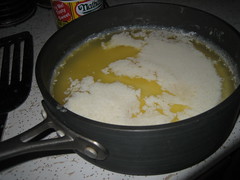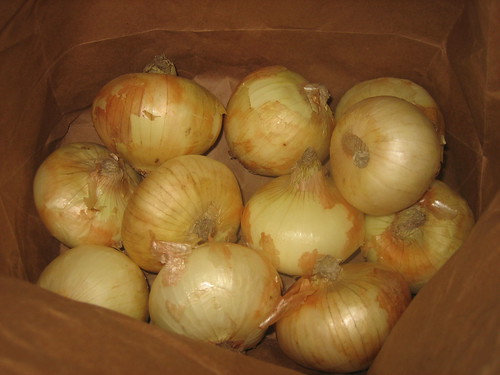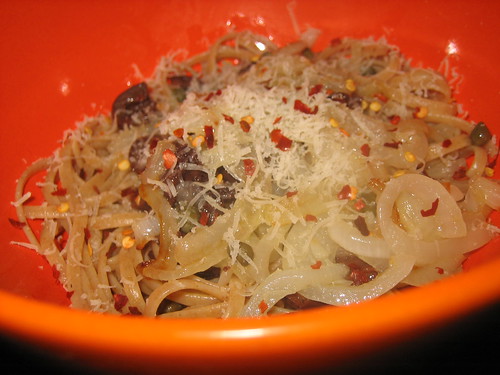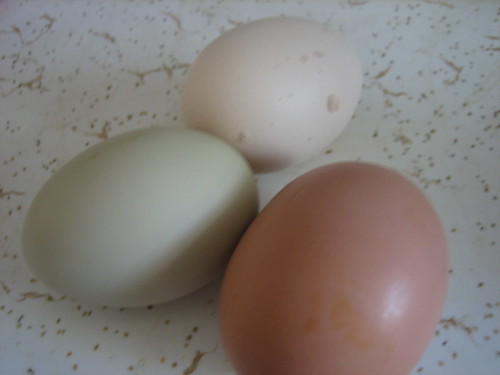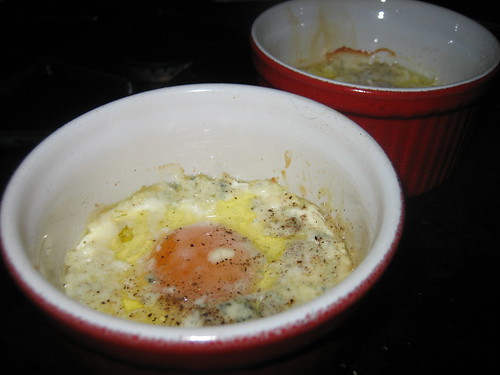
Every spring, they sprout. From the deep south to the border of Canada, everyone waits for the moment they gauge the conditions to be right, and then the hunt is on. I am referring, of course, to the morel, among the most prized of wild mushrooms.
Here in Illinois, the season is underway, which you are already well aware of if you are a hunter. I will admit to being a novice in these matters - this is only my second season hunting for them, but I have already learned a great deal, and expect that experience will hone my skills. Nonetheless, I will post the necessary disclaimer: DO NOT attempt to hunt morels by yourself without fully educating yourself first; if at all possible, go with someone who DOES know what they're doing before attempting to go on your own.
Ok, now that that's out of the way, I'll get down to business. The morel is fairly unique in its structure, which makes it easier to identify than many mushrooms. It is club-shaped, with a honeycombed exterior, and a hollow tube that extends throughout the mushroom. There are three main varieties - black, grey, and half-free morels. The half-free morels are considered inferior in flavor to the first two, but are often dried to add a morel flavor to a dish later in the year. Be sure to educate yourself on how to distinguish false morels, some of which are quite deadly.
The harbingers of the morel season are moist, humid weather and a few good, warm days. Then, you just need to know where to look. If you know of any old apple orchards, I would start there, as this seems to be a particularly lush growing area for the mushroom. Other good places include hardwood forests with dead elms. I have found that they like growing under blackberry brambles, and have heard stories about finding them in abundance along the banks of streams and creeks. If you are curious about whether morels are up in your area, there are a couple of great sites you can check out.
Morel Mushroom Hunting has a great map that tracks sightings (in a general area sense) and
Morels.com has regional blogs with discussions amongst fellow mushroom hunters.
Morels tend to grow in the same areas year after year, and morel hunters all have their favorite spots. Don't expect them to tell you where to find such spots though - they tend to be guarded with almost fanatical secrecy. If you do discover a spot, use a few common sense rules when picking them. First, if it's a large find, leave a few mushrooms to spore for future seasons. Second, when picking the mushroom, try to cut it or pinch it off above the base - mushrooms are the fruiting bodies of the plant beneath the surface, and by minimizing the damage to said plant, it is likely that it will produce more fruiting bodies which will again produce more spores. Many serious morel hunters also put their morels in mesh bags, in order to sow the spores as they walk.
One note - morels for sale. Most morel hunters never sell their morels. They only find enough for themselves and maybe a few friends or family, which is just fine. But there are a few who make serious money off of morels every year. I have no problem with this - especially as I can obtain wild morels, rather than farmed ones, for my restaurant. However, some people seem to think that people will pay anything for morels, and set the prices at rather obscene levels. In the past, I have come across them at Whole Foods for $35/lb and had them offered to me by mushroom hunters for $40/lb. I consider these prices outrageous, and personally, will not pay more than $20/lb. But, if you have no way to hunt them yourselves, be aware that they are occasionally for sale.
Once you have found the morels, treating them properly is paramount. While it is true that mushrooms absorbing water is an old wives' tale, soaking your morels will remove some of their delicate flavor. I suggest just brushing them gently to remove loose dirt and cutting them in half to look for errant insects. If you must wash them, a quick rinse is still a better idea than a long soak.
Morels do contain some toxins, at least according to
wikipedia, which are eliminated through cooking. So as long as you make sure to cook them thoroughly, you should be fine.
Now, I can think of lots of great uses for morels - battered and fried, in a sauce or stew, or sauteed in a pasta. But in this, I must defer to my childhood memories for a recipe that I consider perfection, perhaps because of associations with our ritual family Sunday breakfast that my father prepared without fail every week. I'm not going to give proportions, because I just eyeball this sort of thing anyway.
Morel Omelet
Morels, cleaned & halved
Asparagus spears, woody ends removed, chopped into 1/2 inch pieces
Vidalia or other sweet onions, sliced thin
goat cheese
Eggs
Butter
Over medium-low heat, saute your onions in melted butter until they begin to soften. Add your morels, and saute for several minutes more. Add your asparagus and saute for one or two minutes longer, until the asparagus softens but is still crisp.
In another pan, melt butter over low heat. Whisk your eggs, salt, pepper, and either a splash of water or milk to thin the mixture slightly. Pour your mixture into the melted butter and let the eggs begin to set. With a spatula, gently loosen the edges and tilt the pan while lifting a edge to let the raw egg run underneath. When the eggs are nearly set, add the sauteed mixture and crumble some goat cheese, and close the omelet. Cook for just a few moments more and then remove the omelet from the pan. Serve immediately.
 On my last sojourn to the farmer's market, I was browsing through the stalls, determining what looked most interesting. As I walked by Crump's stand, I noticed what looked like long, bumpy green beans...except that many of them were purple. As they were a vegetable that I had never encountered before, this meant that I had to buy them, of course. The sign informed me that they were crowder peas, but little else.
On my last sojourn to the farmer's market, I was browsing through the stalls, determining what looked most interesting. As I walked by Crump's stand, I noticed what looked like long, bumpy green beans...except that many of them were purple. As they were a vegetable that I had never encountered before, this meant that I had to buy them, of course. The sign informed me that they were crowder peas, but little else.

